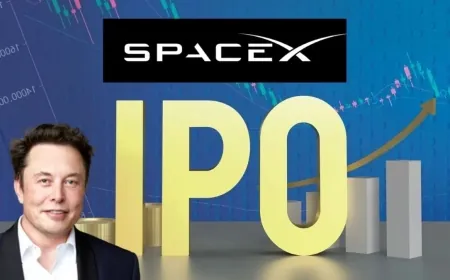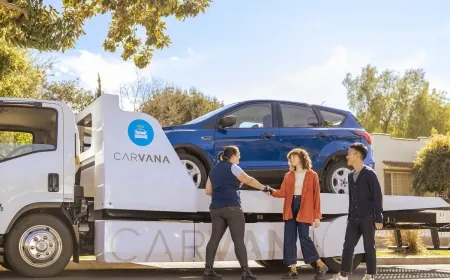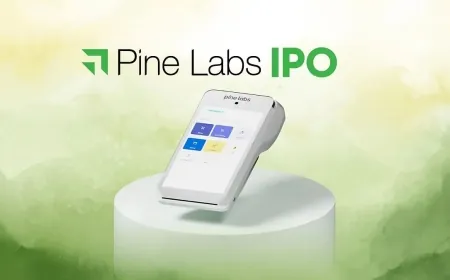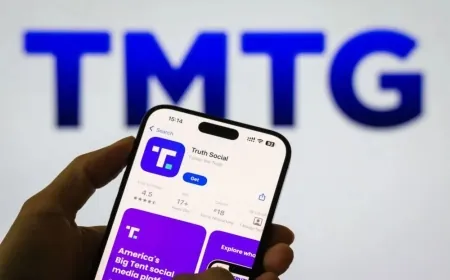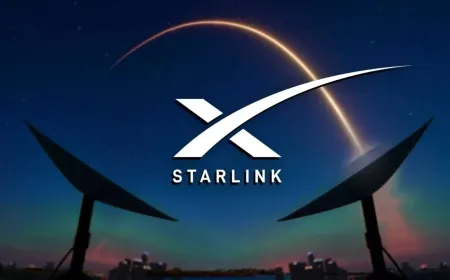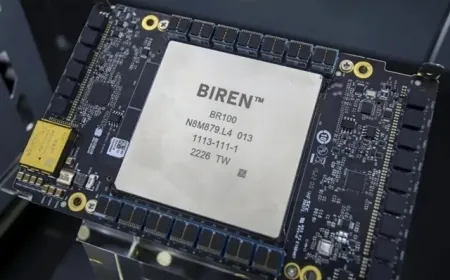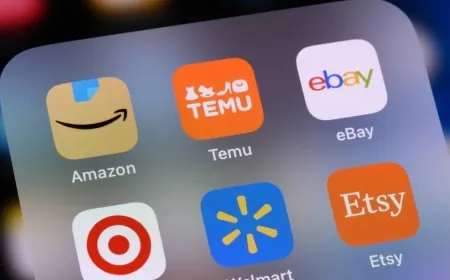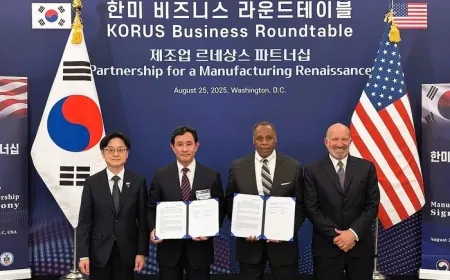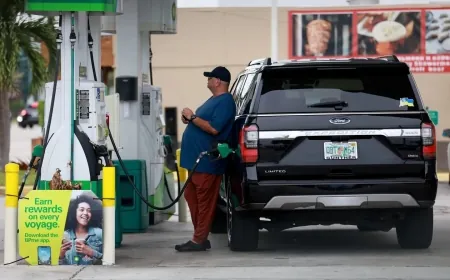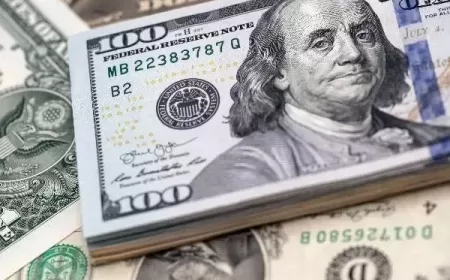Trump T1 Phone Faces Scrutiny Over “Made in USA” Claims and Questionable Specs
The Trump family launches the $499 T1 smartphone under Trump Mobile. Experts question its manufacturing origins and political marketing strategy.
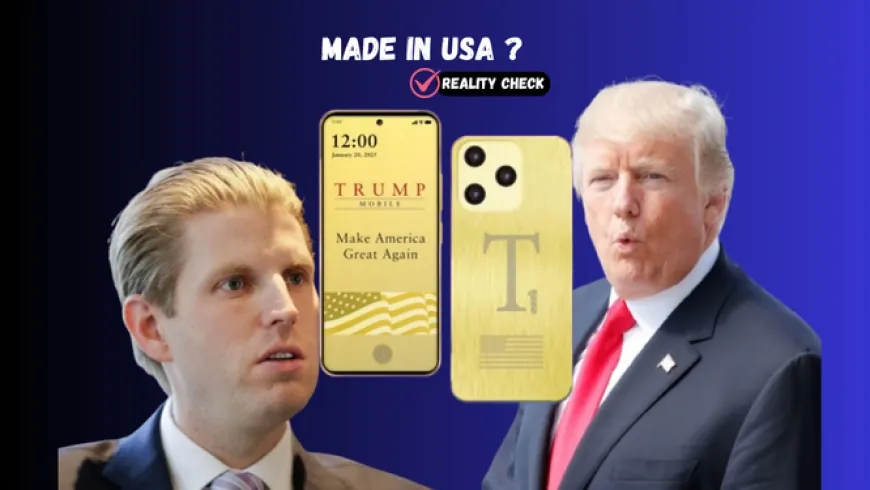
The Trump family’s latest business venture—a smartphone branded as the T1—enters an already saturated mobile market with bold promises and political undertones. Unveiled by Eric and Donald Trump Jr., the device is being marketed as a high-performance, American-made alternative to established Android handsets. But early reactions from analysts and tech experts suggest the phone is anything but revolutionary—and far from domestically manufactured.
According to promotional materials, the T1 features a 6.8-inch AMOLED display, 12GB of RAM, 256GB of internal storage, and a 5,000mAh battery. It includes a triple-lens rear camera setup with a 50MP primary sensor, flanked by 2MP macro and depth lenses. While those specifications place it firmly within the mid-range Android category, inconsistencies on the official product site have already raised eyebrows. For instance, RAM is mistakenly labeled as “storage,” and a listing for a “5,000mAh camera” has drawn ridicule online—a clear technical error that undermines confidence in the product’s presentation.
The T1 runs on the Android operating system, though the company has not specified whether it will receive timely security updates, OS upgrades, or if it will run on a forked version. No mention of Google Play certification or data privacy measures has been made either.
Tech analysts have already noted that these specifications closely resemble the Revvl 7, an Android phone made by Wingtech, a Chinese original device manufacturer (ODM), and sold in the U.S. under T-Mobile’s Metro brand. This has led to speculation that the T1 is merely a rebranded Chinese handset.
Manufacturing in the U.S. — A Political Promise, Not a Present Reality
While the Trump family has promoted the phone as “American-made,” industry insiders are skeptical that the T1 can be produced domestically at scale. The United States currently lacks the supply chain, skilled labor, and advanced infrastructure required to mass-produce smartphones.
Key manufacturing components like semiconductors, camera modules, and AMOLED displays are almost entirely produced in Asia, especially China, Taiwan, and South Korea. Setting up a domestic supply chain would require billions in investment, years of development, and large-scale partnerships with local and foreign component makers.
In reality, most American electronics—including those from Apple, Dell, and HP—are designed in the U.S. but assembled abroad, primarily for cost and scalability reasons. Despite Trump's nationalist rhetoric, even his own past business ventures relied on foreign manufacturing.
Without a concrete roadmap, factory partnerships, or transparent sourcing information, the T1’s “Made in America” branding remains largely symbolic rather than factual.
Experts Suspect White-Label Rebranding Strategy
Multiple analysts agree that the T1 Phone is almost certainly a white-label product. This means Trump Mobile likely approached an ODM overseas—most likely in China—and selected an existing device template. The ODM handles manufacturing, and Trump Mobile applies branding and pre-installed content.
This strategy is common in the tech merchandise industry but contradicts claims of American manufacturing. ODMs typically allow minor modifications like casing changes, logo engraving, and UI customization, which is far from building a phone “from scratch” in the U.S.
White-label phones offer fast turnaround times and lower costs, making them attractive for political campaigns or influencer-led product launches. However, they are often seen as low-risk, low-innovation ventures with limited support lifecycles and minimal after-sales infrastructure.
Trump Mobile Likely Operating as MVNO
The T1 Phone is designed to work on Trump Mobile, the newly launched wireless carrier under the Trump brand. However, there is no indication that Trump Mobile operates its own cellular towers or infrastructure.
Instead, industry experts suggest it is an MVNO (Mobile Virtual Network Operator)—a company that resells service from existing telecom giants like Verizon, AT&T, or T-Mobile. This means while the branding is new, the network experience is virtually identical to that of the underlying carrier.
MVNOs typically lease bandwidth and rebrand plans under their own label. Trump Mobile hasn’t disclosed which network it partners with, nor does it provide technical support or network-specific enhancements—a red flag for consumers who may expect more.
Technical Oversights Add to Concerns
Aside from hardware and manufacturing ambiguity, technical inconsistencies have further damaged the T1 Phone's credibility. On launch day, Trump Mobile’s website described a “5,000mAh camera”, which is clearly a misstatement—mAh is a unit of battery capacity, not camera resolution.
Additionally, the spec sheet incorrectly lists RAM as storage, suggesting either a rushed launch or limited technical understanding from the product team. For consumers and reviewers, such errors can be a red flag, indicating a lack of internal quality control.
No mention has been made of certifications such as FCC approval or software support guarantees—two essentials for any smartphone sold in the U.S. market.
Political Timing and Economic Messaging
The announcement of the T1 Phone coincides with former President Donald Trump’s renewed push for domestic manufacturing ahead of the 2024 election season. He has long criticized U.S. tech companies for outsourcing, even as his own businesses have historically done the same.
His recent threat to impose 25% tariffs on Apple and Samsung phones unless they relocate production to the U.S. aligns with the T1’s patriotic positioning. However, critics argue that this rhetoric often lacks follow-through and serves more as campaign messaging than viable economic strategy.
During his presidency, Trump imposed tariffs as high as 145% on Chinese-made electronics, but later rolled back some of these measures under industry pressure.
September 2025 Launch Raises Industry Skepticism
Trump Mobile has announced that its T1 Phone will be available to U.S. customers starting in September 2025, priced at $499. However, experts in the mobile technology and manufacturing sectors question the feasibility of such a tight production schedule—particularly for a company with no public record of supply chain infrastructure or regulatory preparation.
Unrealistic Timeline Without Evidence of Infrastructure
Building a smartphone—especially under claims of American manufacturing—requires a complex network of steps that typically take over a year to coordinate. Industry insiders note that no known partnerships, factory contracts, or domestic sourcing arrangements have been publicly disclosed. If the T1 is truly to be “Made in the USA,” the following would be essential and are currently unconfirmed:
-
FCC Certification: All phones sold in the U.S. require Federal Communications Commission (FCC) approval to meet safety and network standards.
-
Custom U.S. Assembly Facilities: At-scale production would demand specialized factories, robotics, and trained personnel, which do not yet exist for this project.
-
Component Sourcing: Semiconductors, camera modules, and AMOLED displays are mostly manufactured in Asia. No reliable U.S.-based supply chains for these parts are known to be part of Trump Mobile’s plans.
-
Distribution & Support: Nationwide logistics, retail partnerships, warranty servicing, and repair facilities must be in place before commercial release.
Even large, well-funded tech companies like Apple take 12–18 months to go from design to retail availability. Launching in just a few months with no manufacturing track record stretches credibility.
A Rebranded Overseas Model
Given the lack of evidence supporting a U.S.-based production model, many analysts believe the T1 will be a white-labeled device manufactured in China or Southeast Asia—then rebranded under the Trump name. Sources suggest the specifications bear strong resemblance to models like the Wingtech Revvl 7, already mass-produced and sold under different brand names.
Branding Power Over Technological Ambition
The T1 Phone appears more aligned with political branding than serious technological innovation. While the messaging targets patriotic consumers who favor “Made in America” products, the technical inconsistencies, incorrect spec listings (like confusing RAM with storage), and absence of transparency raise red flags about the device's legitimacy.
Analysts suggest the T1 Phone’s real value lies in energizing a political base rather than disrupting the smartphone market. Without domestic production, regulatory clarity, or retail readiness, the September 2025 target is more aspirational than actionable.
Unless major updates are made public soon, the T1 Phone may enter the market not as a flagship product—but as a marketing tool wrapped in tech aesthetics.
Also Read: Adobe Launches Firefly AI App for iOS & Android with Major New Partnerships
|
Follow iShook on Social Media for More Tips and Updates! |





